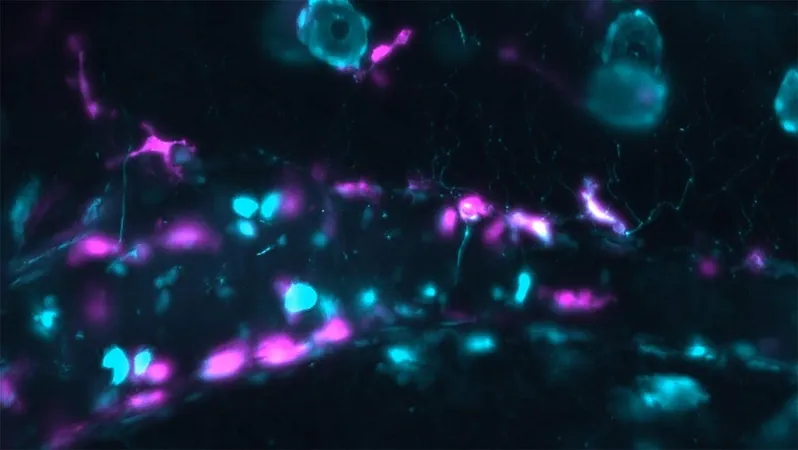
Shocking Discovery: Heart Muscle Regeneration Possible in Artificial Heart Patients!
2024-12-21
Author: Jia
Groundbreaking Study Findings
A groundbreaking study from the University of Arizona College of Medicine—Tucson's Sarver Heart Center reveals an astonishing finding: certain patients with artificial hearts are capable of regenerating heart muscle! This groundbreaking research, co-led by physician-scientist Dr. Hesham Sadek, could revolutionize treatment for the nearly 7 million adults in the U.S. suffering from heart failure, which is linked to 14% of annual deaths.
Current State of Heart Failure Treatment
Heart failure currently has no cure; medications can only slow its progression, and patients with advanced heart failure are often reliant on left ventricular assist devices (LVADs). These devices help pump blood, but now it seems they may also trigger heart muscle regeneration.
The Heart's Capacity for Regeneration
Dr. Sadek explains, "Unlike skeletal muscle, which heals after injury, heart muscle traditionally does not regenerate. We have long lacked solutions to reverse muscle loss in the heart." This evolutionary breakthrough sheds light on the heart's intrinsic capacity for regeneration.
Research Collaboration and Methodology
The research team collected tissue samples from LVAD patients, in collaboration with the University of Utah's Dr. Stavros Drakos to analyze heart muscle regeneration. They partnered with experts from the Karolinska Institute in Sweden and Germany to develop an innovative method of carbon dating human heart tissue, revealing that patients with artificial hearts exhibit muscle regeneration at over six times the rate seen in healthy hearts!
Implications for Heart Regeneration
Dr. Sadek remarks, “This is the strongest evidence we have that human heart muscle can actually regenerate. We may finally be able to target the molecular pathways involved in cell division to enhance this ability.”
Past Research Insights
This incredible finding is built on Dr. Sadek’s previous work, demonstrating that heart muscle cells actively divide before birth but stop soon after—devoting their efforts to nonstop blood pumping. In earlier studies, he provided evidence for heart muscle regeneration in artificial heart patients, igniting speculation that the artificial heart allows these muscles a critical "rest."
The Mystery of the Responders
Dr. Sadek says, “The pump pushes blood past the heart, essentially putting it at rest, much like allowing a strained muscle to recover.” After extensive investigation, the current study has provided the most compelling evidence yet for this regeneration process.
Challenges Ahead
However, the research did uncover a mystery: why do only 25% of patients (the "responders") experience this regenerative effect? Understanding the reasons behind this could lead to groundbreaking advances in how we treat heart failure. “If we can make everyone a responder, we might find a way to essentially cure heart failure,” Dr. Sadek states.
Future Directions
This research not only marks a significant shift in our understanding of heart disease but also opens new doors to potential therapies that combine existing technology with this newfound biological insight. Could the artificial heart's potential become the future of heart treatment? Stay tuned as these findings unfold!




 Brasil (PT)
Brasil (PT)
 Canada (EN)
Canada (EN)
 Chile (ES)
Chile (ES)
 España (ES)
España (ES)
 France (FR)
France (FR)
 Hong Kong (EN)
Hong Kong (EN)
 Italia (IT)
Italia (IT)
 日本 (JA)
日本 (JA)
 Magyarország (HU)
Magyarország (HU)
 Norge (NO)
Norge (NO)
 Polska (PL)
Polska (PL)
 Schweiz (DE)
Schweiz (DE)
 Singapore (EN)
Singapore (EN)
 Sverige (SV)
Sverige (SV)
 Suomi (FI)
Suomi (FI)
 Türkiye (TR)
Türkiye (TR)